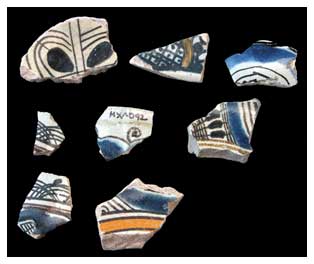
| FAMSI © 2008: Patricia Fournier and M. James Blackman |
||
Production, exchange and consumption of glazed wares in New Spain: formation of a database of elemental composition through INAA
Research Year: 2006 Table of Contents
Abstract This report presents the results of an investigation that contributes to the understanding of raw material sources utilized in the production of lead glazed ceramics (majolica and glazed earthenwares) in New Spain. Complementary aspects of documentary research and ceramic paste compositional analysis by means of instrumental neutron activation analyses provide the basis for the establishment of different compositional groups of historically relevant ceramics. Through the study of the technologies responsible for the manufacture of ceramics and the contexts in which manufacturing, use, and dispersal occurred, we gain information about both regional and local social processes, thereby leading to a more comprehensive knowledge of the directions along which objects and ideas moved. The results provide a basis from which to document how the Europeans and their descendants who colonized Mesoamerica and the borderlands changed aspects of Native American societies, and in the process were themselves transformed. Click to download the complete report in PDF format:
Production, exchange and consumption of glazed wares in New Spain: formation of a database of elemental composition through INAA (1.18 MB) The PDF files require Adobe Acrobat Reader.
Submitted 09/06/2007 by:
M. James Blackman (NMNH-Smithsonian Institution, Washington DC) |
||
|
Text links to all pages at this site are available at the FAMSI INDEX |
||

